RARE! WWII 1942 U.S. Navy Combat “RESTRICTED” Office of Naval Intelligence Allied Submarine Identification Poster (LARGE SIZE)*

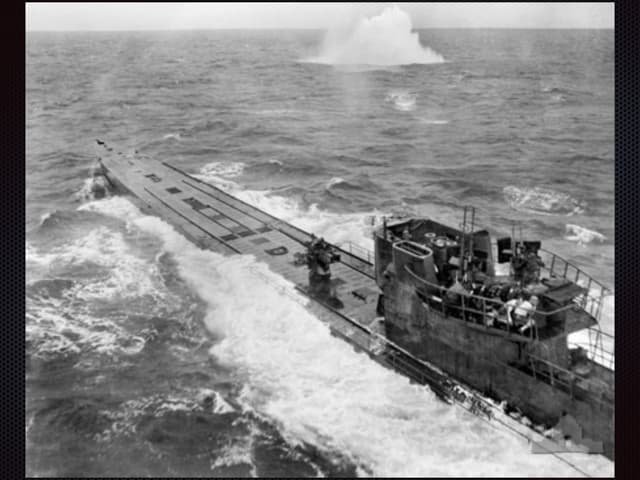
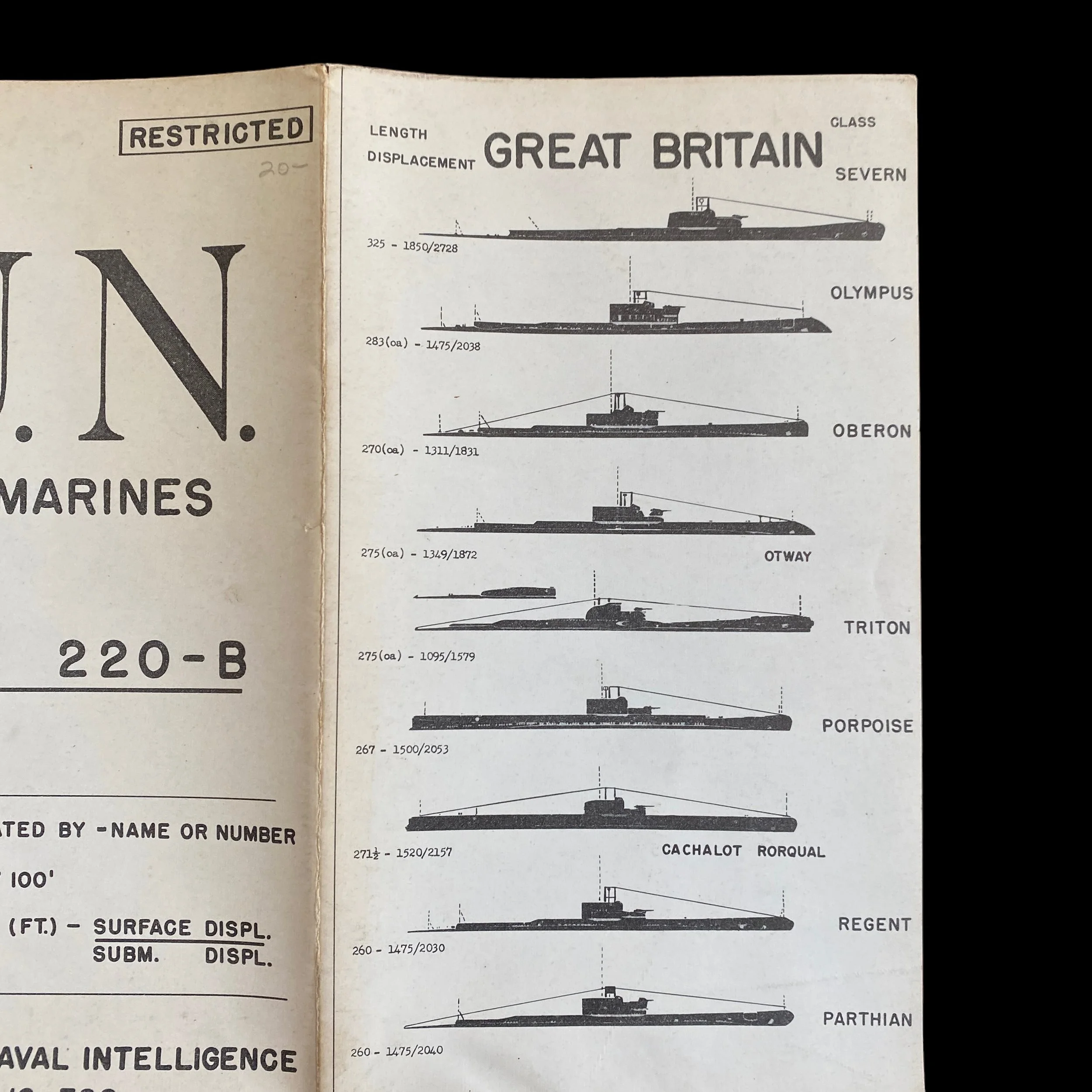
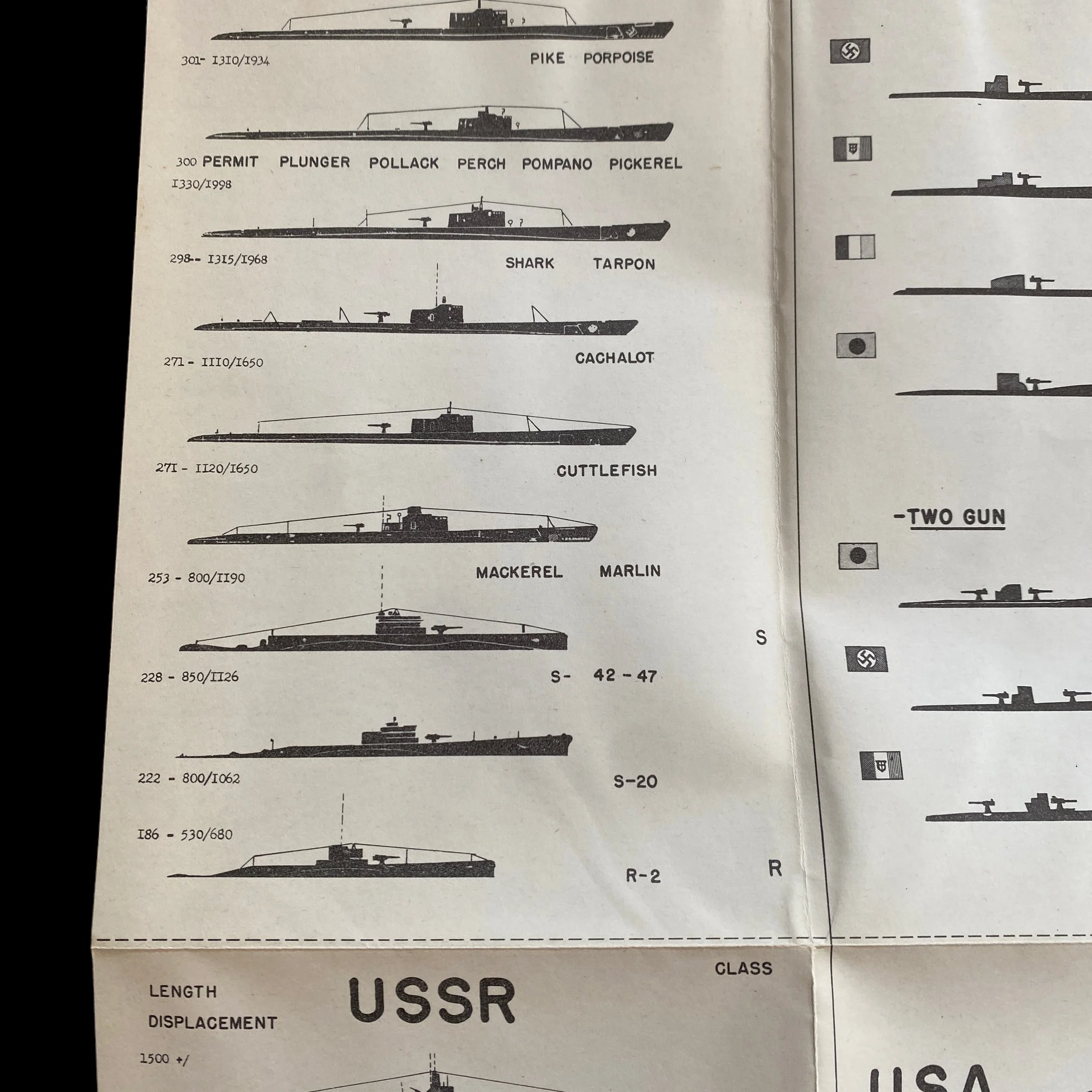


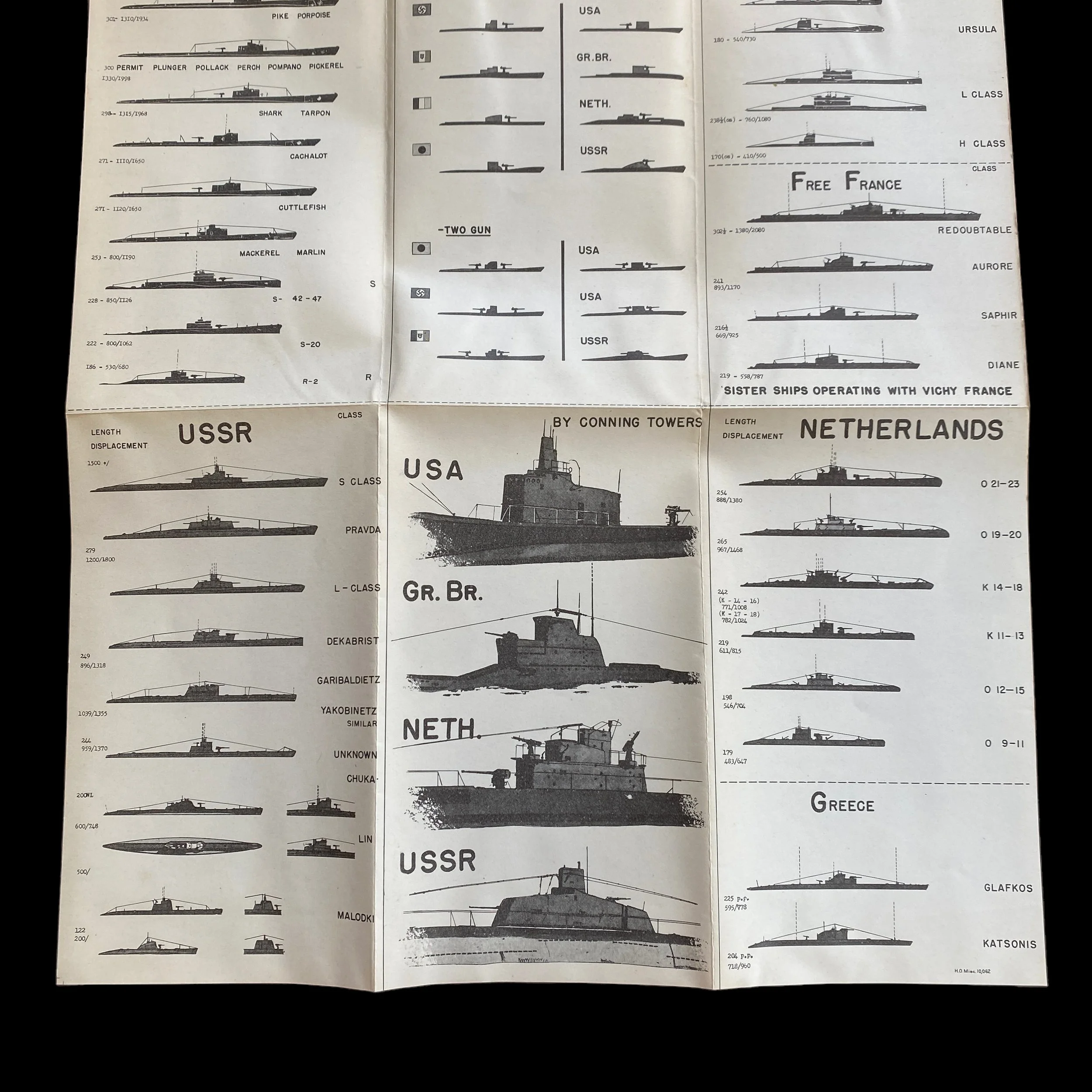








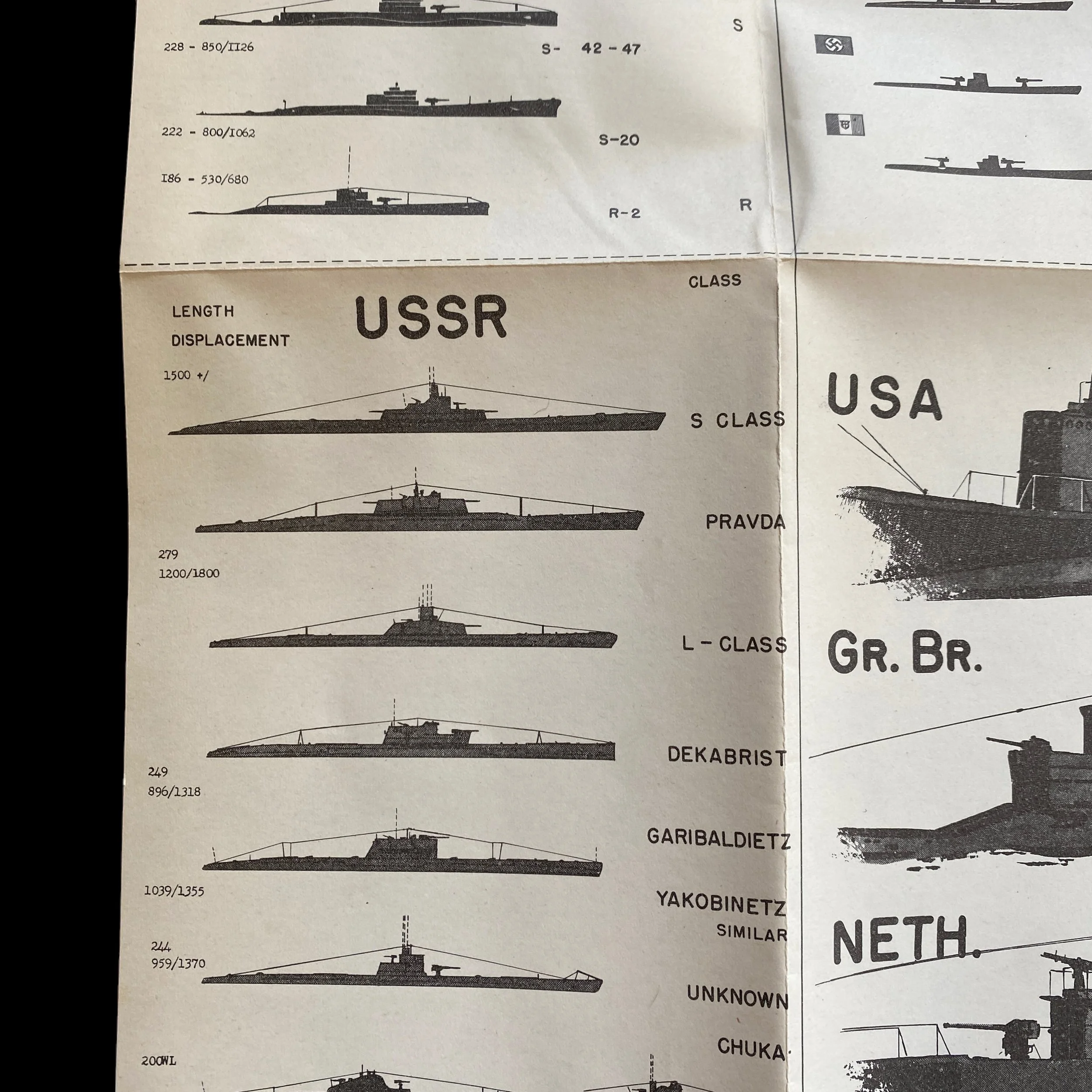
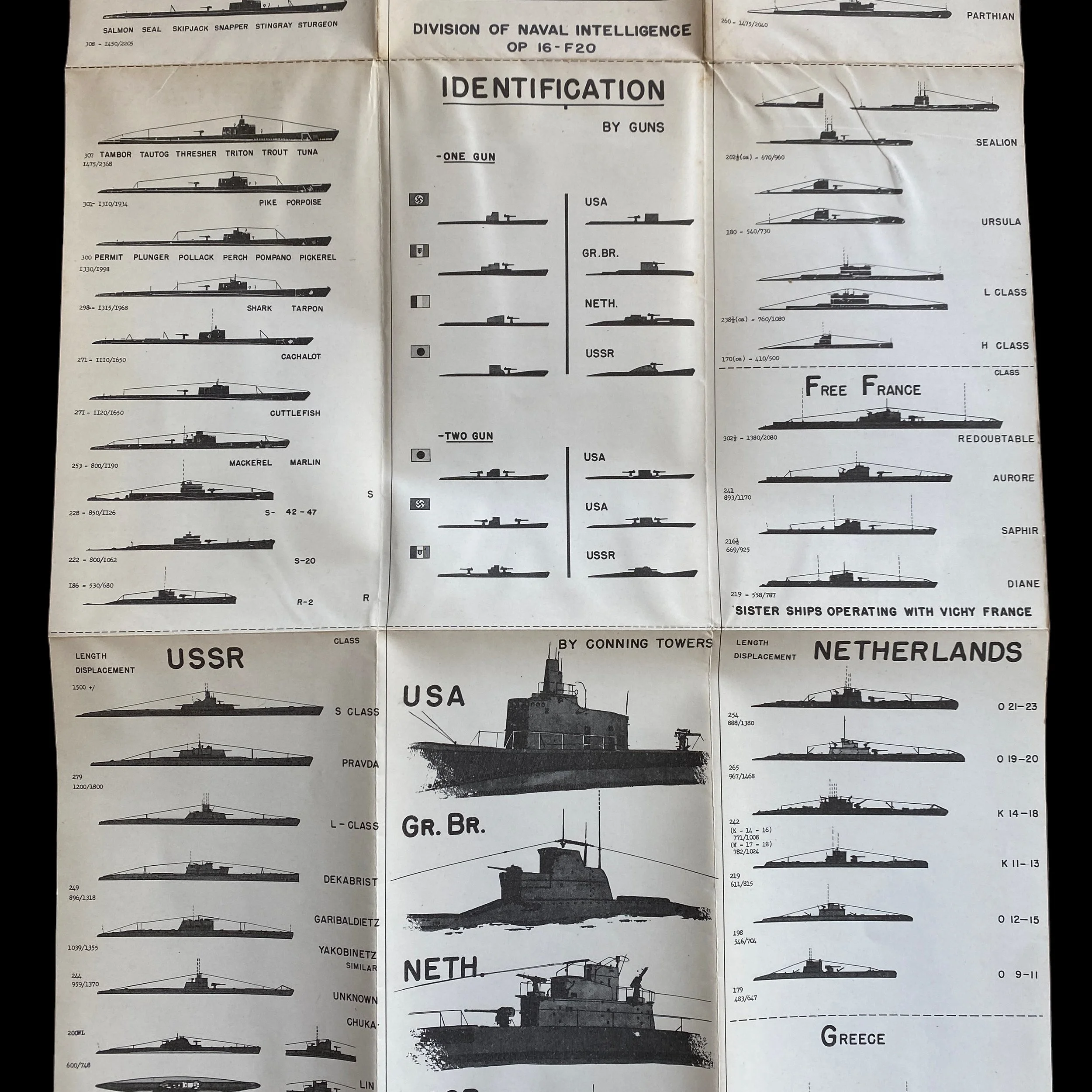







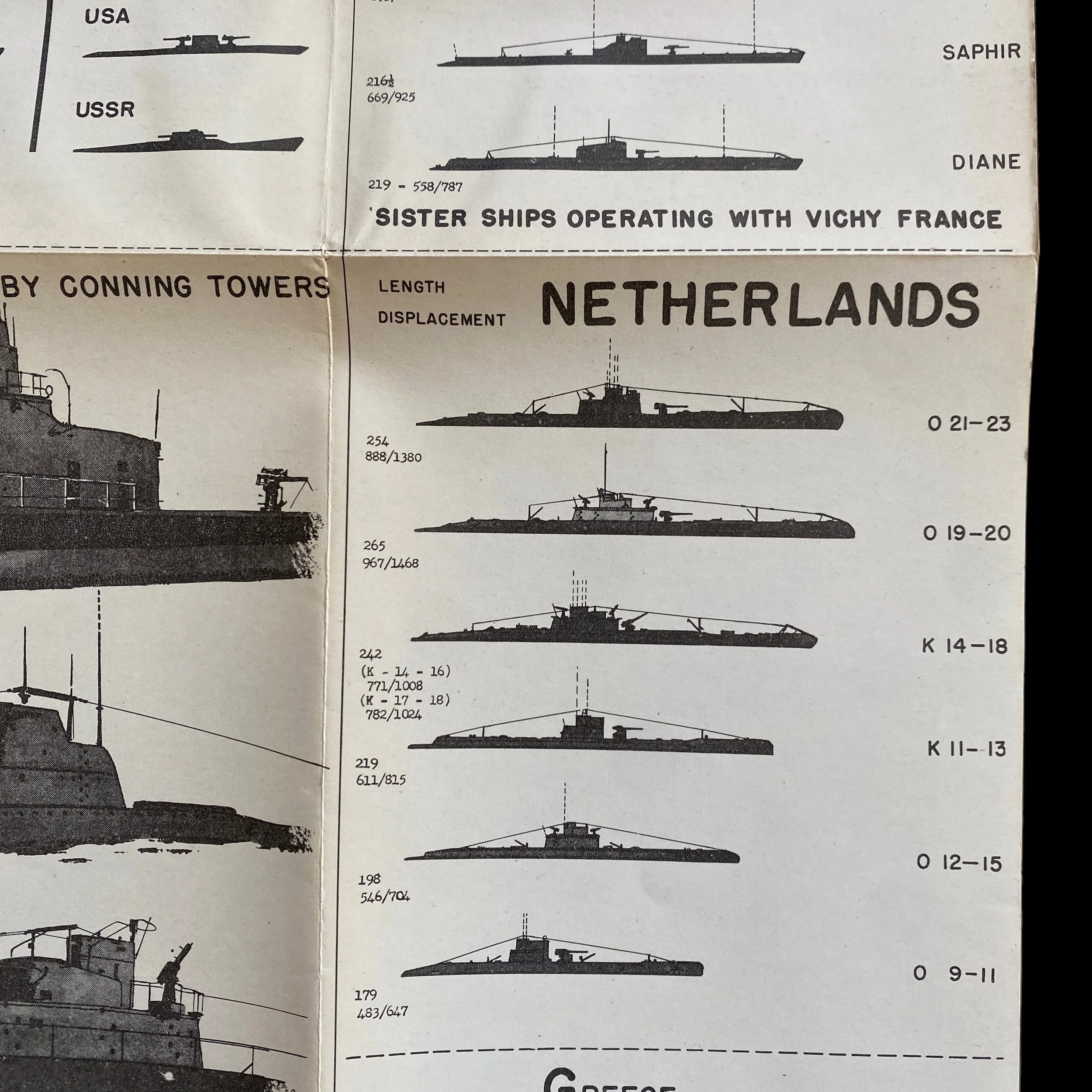

RARE! WWII 1942 U.S. Navy Combat “RESTRICTED” Office of Naval Intelligence Allied Submarine Identification Poster (LARGE SIZE)*
Comes with hand-signed C.O.A.
Size: 25 x 14 inches
This poster, marked “RESTRICTED” and issued in May 1942, played a pivotal role during World War II, particularly when SECRET and CONFIDENTIAL military maps and documents were actively utilized in the heart of combat across both the European and Pacific Theaters. This USN artifact showcases silhouette and identification guides for submarines from the United States, as well as those from key Allied nations such as Great Britain and France. These posters were not merely informational but served as essential tools for recognizing the name and key characteristics of Allied submarines, while also providing comprehensive identification guides complete with armament details for distinguishing enemy submarines.
The significance of such posters cannot be overstated. In the tumultuous and often chaotic environment of wartime operations, the ability to quickly and accurately identify friend from foe was crucial. These posters were meticulously designed to impart critical information at a glance, ensuring that naval personnel could make informed decisions swiftly. Their usage spanned the vast and varied theaters of war, from the choppy waters of the Atlantic and Mediterranean to the vast expanses of the Pacific Ocean, playing a vital role in the operations of the United States Navy and its Allies.
These identification posters served a dual purpose. Not only did they aid in the recognition of Allied and enemy submarines, but they also functioned as a guide to the unique anatomical features of Allied submarines. This nuanced understanding allowed for better strategic planning and operational security, as it enabled Allied forces to deploy their submarine fleets more effectively, minimizing the risk of friendly fire while maximizing the element of surprise against the Axis powers.
The wear and tear evident on these posters speak volumes about their extensive use and the harsh conditions under which they were employed. They were more than mere pieces of paper; they were lifelines that often determined the outcome of naval engagements. The study and application of the information contained within these charts could, quite literally, mean the difference between life and death in combat situations.
These posters offer a fascinating glimpse into the complexities of naval warfare during World War II. They reflect the meticulous planning, strategic foresight, and detailed knowledge required to navigate the perils of war at sea. Their preservation and study provide invaluable insights into the technological and tactical advancements of the time, as well as the enduring importance of reliable information and quick decision-making in military operations.
World War II: The Underwater Chess Game of the Allied and Axis Powers:
World War II, spanning from 1939 to 1945, was a global conflict that saw unprecedented mobilization of troops, resources, and technology. Among the various theaters of war, the silent, shadowy depths of the world's oceans played host to a relentless, often overlooked battle between the submarines of the Allied forces—primarily the United States, Great Britain, and France—and the U-boats and submarines of the Axis powers, mainly Germany and Japan.
The European Theater: The Battle of the Atlantic
The Battle of the Atlantic stands as the longest continuous military campaign of World War II, stretching from the war's outset in 1939 to its conclusion in 1945. The primary objective for the Allied forces, particularly the navies of Great Britain and the United States, was to ensure the safe passage of military and civilian supplies from North America to Europe. German U-boats, leveraging the "wolf pack" tactics under the ingenious command of Admiral Karl Dönitz, sought to sever these lifelines in a bid to starve Britain into submission.
Allied submarines, although fewer in number compared to their surface fleets, played crucial roles in intelligence gathering and targeted assaults on German U-boats and supply ships. The turning point in the Battle of the Atlantic came with the advent of technological advancements such as radar, sonar (then known as ASDIC), and the breaking of the Enigma code, which allowed Allied forces to predict and counter German movements with greater accuracy. Operations such as Operation Drumbeat underscored the lethality of German U-boats, but the tide turned as the Allies refined anti-submarine warfare tactics and increased production of escort vessels.
The Mediterranean Theater: A Complex Battleground
The Mediterranean Sea was another crucial battleground for submarine warfare, involving not just the Allies and Axis powers but also the naval forces of occupied countries like France. The strategic significance of the Mediterranean—providing access to the Suez Canal and the Middle Eastern oil fields—made it a fiercely contested zone. Allied submarines, including those of the Free French Naval Forces, conducted numerous covert operations, laying mines in enemy harbors and attacking Axis shipping lines supplying the Afrika Korps in North Africa.
The Pacific Theater: Island Hopping and Submarine Warfare
The Pacific Theater presented a vastly different set of challenges and opportunities for submarine warfare, primarily involving the United States and Japan. The vast expanse of the ocean and the island-hopping strategy adopted by Allied forces necessitated a significant reliance on submarines for reconnaissance, raiding isolated islands, and interdicting Japanese supply lines. The U.S. Navy's submarine fleet, though constituting a small fraction of its total naval assets, was responsible for a disproportionately large amount of Japanese shipping losses, effectively crippling Japan's war-time economy and supply chains.
Operations such as the sinking of the Japanese aircraft carriers Shōkaku and Taihō by American submarines USS Cavalla and USS Albacore, respectively, highlighted the strategic value of Allied submarines in undermining Japanese naval power. Moreover, the use of submarines to rescue downed pilots and conduct special operations provided a crucial advantage to the Allied forces in the Pacific.
The Rules of Engagement and the Shadow War
Submarine warfare, while effective, raised numerous ethical and legal questions regarding the rules of engagement. The unrestricted submarine warfare practiced by both sides, targeting not only military but also civilian shipping without warning, was a point of contention. The Laconia Order issued by Dönitz, instructing U-boat captains to not rescue survivors of sunken ships, underscored the brutal nature of this underwater war.
The contributions of Allied submarines in World War II, operating alongside and against those of Germany and Japan, underscore the multifaceted nature of naval warfare. In the silent depths of the world's oceans, these submarines executed missions that were pivotal to the outcome of the war, often at great risk and with significant losses. The strategic blockades, covert operations, and relentless pursuit of enemy vessels by submarines of the United States, Great Britain, and France significantly undermined the Axis powers' ability to sustain their war efforts. As we reflect on the complexities and innovations of submarine warfare during World War II, it becomes evident that the silent service played a critical role in shaping the course of history, demonstrating the profound impact of undersea combat on the outcome of one of the twentieth century's defining conflicts.